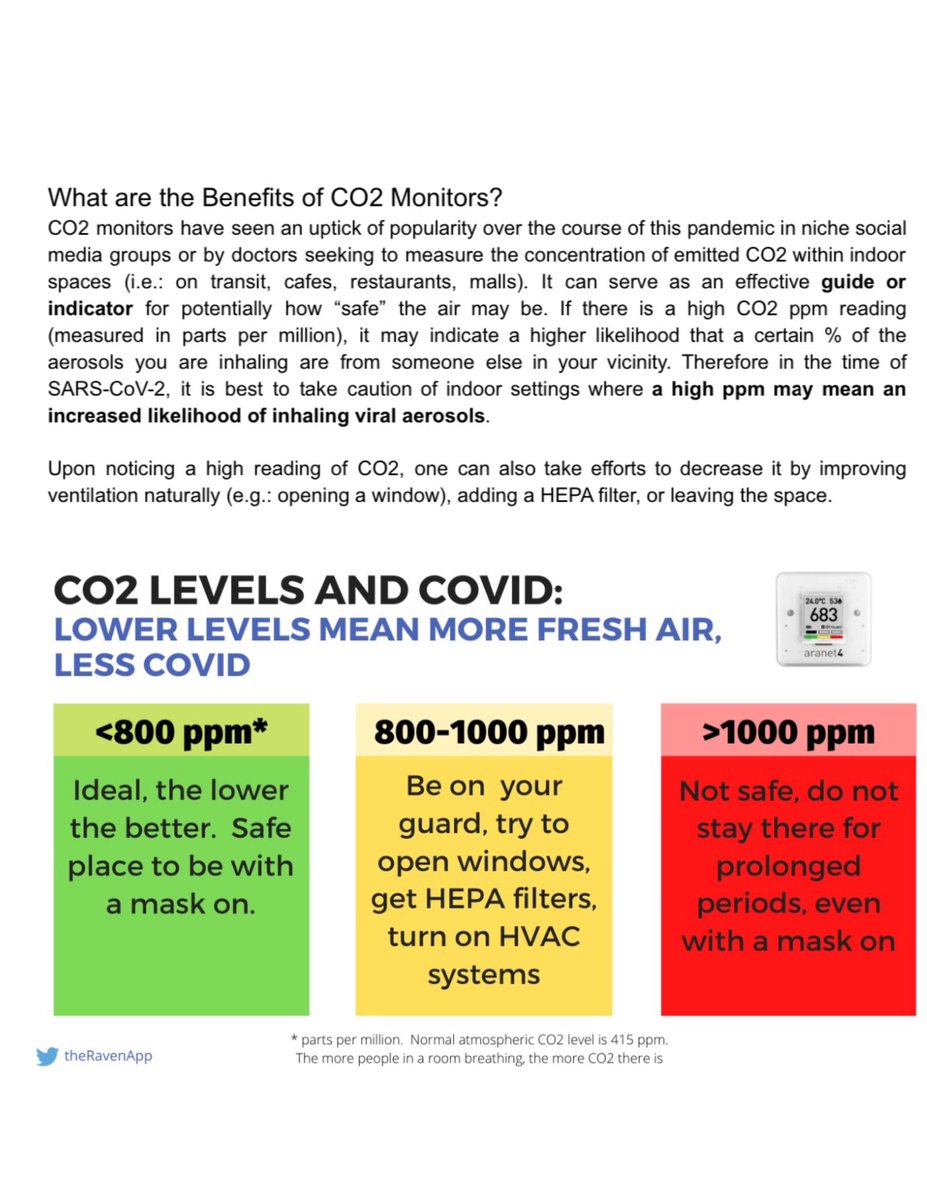Hey new followers and COVID-aware folks! ☺️ If you haven’t heard of CO2 monitors already, you may want to look into getting one since #COVIDisAirborne, and these monitors can aid in your risk assessments. Here’s a 🧵 on how to use them in your daily routine. 

For reference, something I typed up last year to explain to others the benefits of CO2 monitors in assessing COVID risk in spaces. Outside air is around 450ppm I’ve found in Vancouver. The lower the number, the better. #BCCO2 #COVIDCO2 

CO2 monitoring is actually more common than you think! It’s a norm in Japanese restaurants/airports/theatres (see @daka_x’s tweets). Users have inputted data in this developed map for CO2 logged locations worldwide 🙌
https://twitter.com/wanderingkayli/status/1558957007549259776
I got this off a tweet @joeyfox85 shared (who’s fantastic to follow for more on this). This means if your monitor says 1200+ ppm, 1 in every 50 breaths you take is exhaled from others. Air is the new poop. We filter our water, so why not our air when #COVIDisAirborne? #MaskUp 

Now onto acquiring your CO2 monitor! So many options on the market, where to start? First you want to ensure it relies upon NDIR technology for best accuracy possible. co2meter.com/blogs/news/how…
Here are some options I’d recommend for models, varying in price range. The Aranet4 is extremely accurate and can even transmit the data tracked to your phone! Price point is a bit high (around $350+ CAD), but in terms of battery life (6+months) & accuracy, this is a winner to me 



I bought a more affordable option for my parents to use. This keychain one ($64 CAD) is sold on shop.evidencebased.ca/collections/co… which supports the charity @DonateMask and it updates very rapidly! Downside is battery life, which holds a charge up to 8 hours. Btw it emits an alarm at 1000+ 

Before I got my Aranet4, I found this model on Amazon which I liked decently enough! It was maybe 100ppm off, accuracy-wise. I accidentally dropped it and it broke 😅😭. This is unavailable now, but I’m including this for awareness of other models online 

So now you got a monitor! 🙌 Using them in your daily life means recognizing the spaces that, if possible, you shouldn’t spend too long of a duration in if the CO2ppm is risky. Can you open any windows? Wait near a door? Meet outside? Curbside pickup? Any options for ventilation?
Alternatively, they can also provide you freedom from *some* uncertainty. If you want to risk a restaurant, for example. Below is one of my fav spots in Vancouver for that purpose. (However I don’t dine indoors during waves and I MUCH prefer patios and being outdoors in general). 

Lastly, here’s a real-world story of mine where being CO2-aware and cognizant of the fact #COVIDisAirborne may have saved me from reinfection.
https://twitter.com/wanderingkayli/status/1520923920949342208
With this being said, it takes more than a CO2 monitor to avoid infection. This should be used as a valuable tool in CONJUNCTION with filtration (HEPA filters, opening windows), well-fitting masking, bi-annual booster shots, and rapid testing before indoor events/gatherings. 🫶
• • •
Missing some Tweet in this thread? You can try to
force a refresh

 Read on Twitter
Read on Twitter



